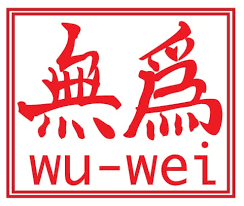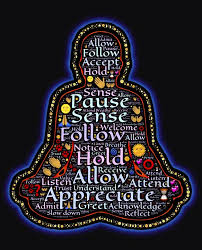I have written elsewhere about my initial reactions to reading Benjamin Hoff’s The Tao of Pooh: “Seeing yourself in a particular character can be a quite painful experience, if you are at all self-aware. I adored everyone in Winnie the Pooh quite uncritically as a child. But when reading Benjamin Hoff’s The Tao of Pooh sent me back to it as an adult, I became uneasily aware that there was more of the pontifical Owl and the too-busy, too-clever-by-half Rabbit in me than I would care to admit. The Pooh books are surprisingly deep and complex in their characterisation, although of course their intended readers will not see that, as they themselves are not yet tainted by the characters’ more adult faults. Hoff’s book changed the way I thought of Pooh, Tigger and the rest. I now have a much greater admiration for Pooh’s happy-go-lucky simplicity, and for Piglet’s growth in self-awareness and courage.”

I have recently re-read this marvellous book, and also, for the first time, its successor, The Te of Piglet. The two together have given me a deeper understanding of the principles of Taoism, the ancient Chinese religion / philosophy. According to Hoff, “basic Taoism … is simply a particular way of appreciating, learning from, and working with whatever happens in everyday life.” It involves living in harmony with the world, rather than trying to mould it to our own ends.
In order to understand what Taoism is, it is first necessary to understand what the Tao is. The word Tao means a path or way, and hence a way of acting or a principle or doctrine. There is a Tao of heaven, the way the universe works, and also a Tao of man in harmony with the universe. It is necessary to hold both these ideas together to understand the principles of Taoism.
On one level, Tao is the ultimate reality and unity behind the diversity of things. This is the meaning behind the first few lines of Chapter 42: “The Tao gives birth to One. One gives birth to Two. Two gives birth to Three. Three gives birth to all things.” The Tao is the origin before the original. From Tao comes origin. From this origin come the two forces of yin and yang, which represent the great opposites. They are opposing but interdependent concepts – for example, without the idea of cold we would not be able to describe heat. The aim is to achieve a balance between them. From these comes the triad of Heaven, Earth and Humanity, and from these come all forms of existence. In Chinese thought, life is kept spinning by the constant struggle between the two opposite forces of yin and yang.

Chapter 32 of the Tao Te Ching mentions an important Taoist concept – the uncarved block. In one way, the Tao is the ultimate uncarved block, the unity behind all multiplicity; the argument being that if the block is carved, there will be distinctions and names, and opposition to the unity of nature. Benjamin Hoff’s way of explaining the principle is to say that “things in their original simplicity contain their own natural power, power that is easily spoiled and lost when that simplicity is changed.” He goes on to say that the average Chinese dictionary will define the written character P’u as “natural, simple, plain, honest”.
This principle applies not only to things in their natural beauty and function, but also to people. Simplicity is the key – an ability to enjoy the simple and the quiet, the natural and the plain. The other side of this is more mysterious “the ability to do things spontaneously and have them work, odd as that may appear to others at times.” To quote the Tao Te Ching (Chapter 67 this time) Lao Tse writes “I have just three things to teach: simplicity, patience, compassion. These three are your greatest treasures – simple in actions and in thoughts, you return to the source of being. Patient with both friends and enemies, you accord with the way things are. Compassionate towards yourself, you reconcile all beings in the world.”
So much for P’u, the Uncarved Block – the natural power contained by things and people who keep to the simple and the quiet, the natural and the plain. Closely allied to this is the idea that everything and everybody has their own Inner Nature, and that it is important to recognise Things Are As They Are. Lao Tse teaches that you need to learn how to go with the flow, not meddling with the natural way, the Tao.
In other words we need to recognise that everything has its own place and function, and it is bootless to struggle to be a square peg in a round hole. In the words of the Tao Te Ching, “The Tao never does anything, yet through it all things are done. If powerful men and women could centre themselves in it, the whole world would be transformed by itself, in its natural rhythms. People would be content with their simple everyday lives, in harmony, and free of desire. When there is no desire, all things are at peace.” (Chapter 37)
Closely related to recognising Things Are As They Are is the principle of Wu Wei, the way of water. Literally, Wu Wei mean “without doing, causing, or making”, but practically, it means, no going against the nature of things.
As Benjamin Hoff explains “The efficiency of Wu Wei is like that of water flowing over and around the rocks in its path [an approach] that evolves from an inner sensitivity to the natural rhythm of things.” The idea is to work with the natural order of things and to operate on the principle of minimal effort. Since the natural world follows that principle, it does not make mistakes. Mistakes are made by man, when he ignores the natural law and interferes with things and tries to control them.
To quote Hoff again “When you work with Wu Wei, you put the round peg in the round hole and the square peg in the square hole. No stress, no struggle. Egotistical desire tries to force the round peg into the square hole and the square peg into the round hole. Cleverness tries to devise craftier ways of making pegs fit where they don’t belong. Knowledge tries to figure out why round pegs fit round holes, but not square holes. Wu Wei doesn’t try. It doesn’t think about it. It just does it. And when it does, it doesn’t appear to do much of anything. But Things Get Done.”

The trick of Wu Wei is that you don’t try to make things work out; you just let them. And somehow, things just happen in the right way, at the right time. Put another way, Wu Wei is the art of being. It is the art of being in such harmony with the Tao that everything happens as it should – not forced, not sought after, not planned, not bought, not desired – it just happens.
Re-reading these two excellent books, and re-acquainting myself with the wonders of Taoism, I have been struck by the parallels between Taoist principles and Christian mysticism. In the latter, adepts use skills such as centering prayer to try to move into what Richard Rohr calls “unitive consciousness” with God. Not a million miles away from living in harmony with the Tao, in my opinion. Chapter 16 of the Tao Te Ching could just as easily be about moving closer to God, as about living in harmony with the Tao:
“Empty your mind of all thoughts.
Let your heart be at peace.
Watch the turmoil of beings, but contemplate their return.
Each separate being in the universe returns to the common source.
Returning to the source is serenity.
If you don’t realise the source, you stumble in confusion and sorrow.
When you realise where you come from, you naturally become tolerant, disinterested, amused, kind-hearted as a grandmother, dignified as a king.
Immersed in the wonder of the Tao, you can deal with whatever life brings you, and when death comes, you are ready.”

